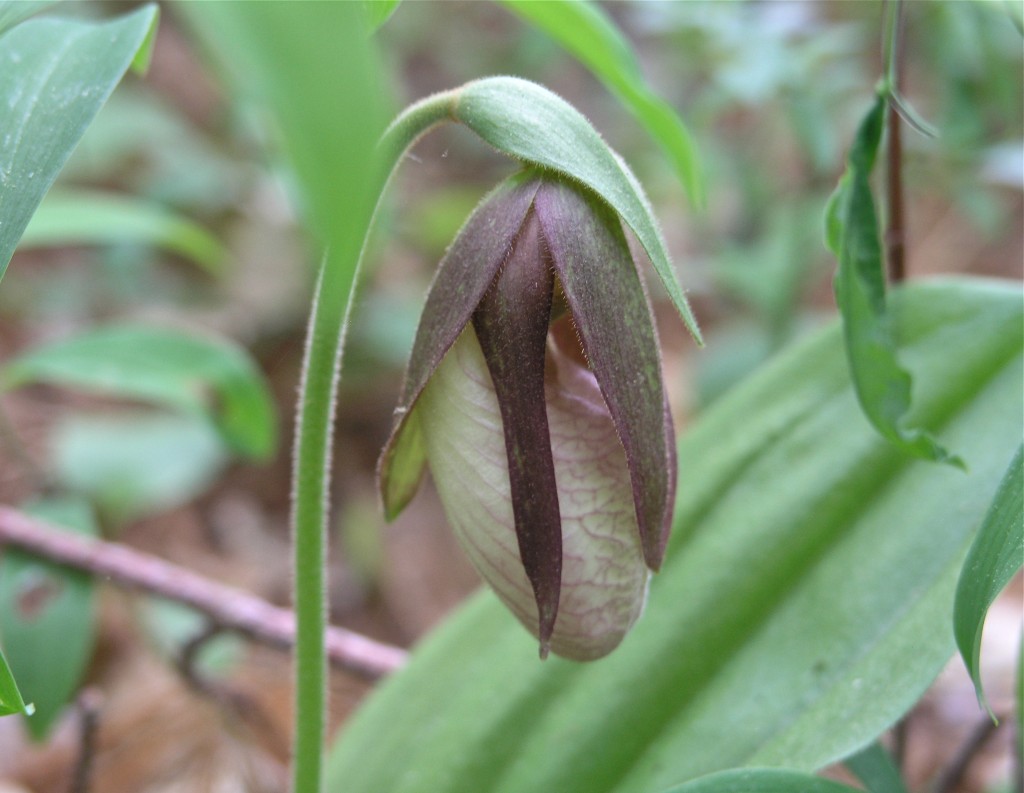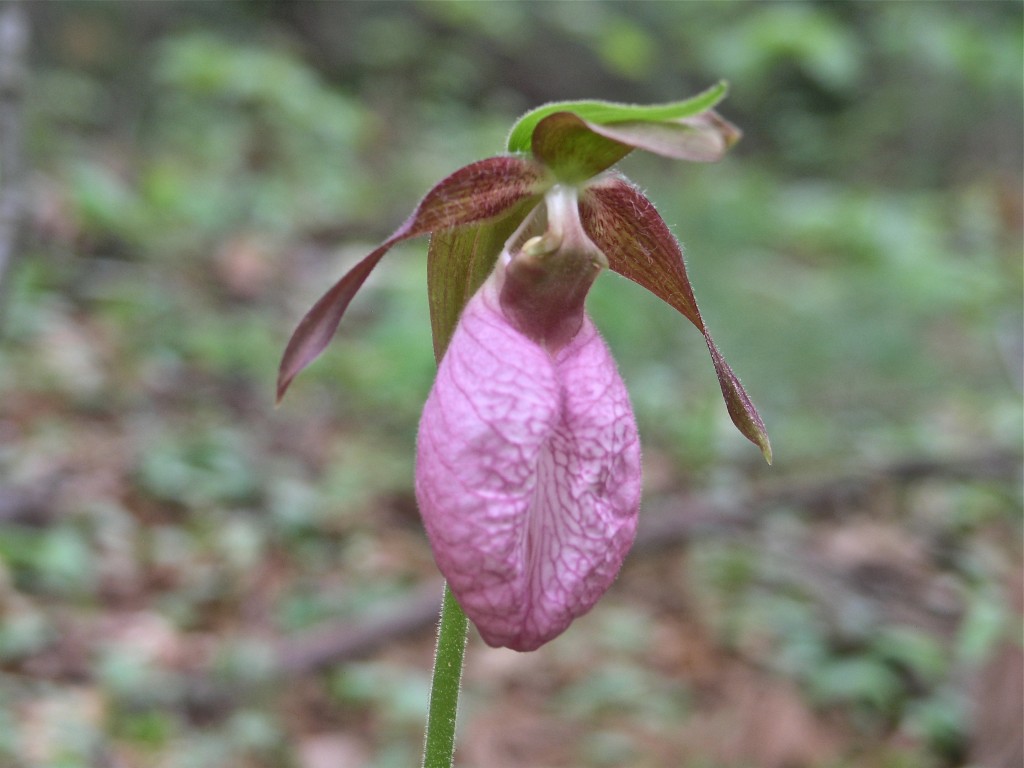
 I thought I was finding white lady-slippers along with this pink one, but A.F. Donna thinks the white ones might just be pink ones that aren’t fully ripe. And I think she must be right. I suppose that white one will turn pink as it lifts its… hair out of its eyes… I love the purple sheen along the top. They can live to be over 20 years old. Orchid family.
I thought I was finding white lady-slippers along with this pink one, but A.F. Donna thinks the white ones might just be pink ones that aren’t fully ripe. And I think she must be right. I suppose that white one will turn pink as it lifts its… hair out of its eyes… I love the purple sheen along the top. They can live to be over 20 years old. Orchid family.
U.S. Forest Service: “In order to survive and reproduce, pink lady’s slipper interacts with a fungus in the soil from the Rhizoctonia genus. Generally, orchid seeds do not have food supplies inside them like most other kinds of seeds. Pink lady’s slipper seeds require threads of the fungus to break open the seed and attach them to it. The fungus will pass on food and nutrients to the pink lady’s slipper seed. When the lady’s slipper plant is older and producing most of its own nutrients, the fungus will extract nutrients from the orchid roots. This mutually beneficial relationship between the orchid and the fungus is known as “symbiosis” and is typical of almost all orchid species.”
Also: “Pink lady’s slippers also require bees for pollination. Bees are lured into the flower pouch through the front slit, attracted by the flower’s bright color and sweet scent. Once inside, the bees find no reward, and discover that they are trapped, with only one point of escape. Inside the pouch, there are hairs that lead to a pair of exit openings, one beneath each pollen mass. The bee must pass under the stigma, so if it bears any pollen from a visit to another flower, it will be deposited before picking up a fresh load on the way out.”
no wonder they’re rare.
Pink Lady-slipper, Moccasin flower (Cypripedium acaule Ait.)

Good thing they live a long time!